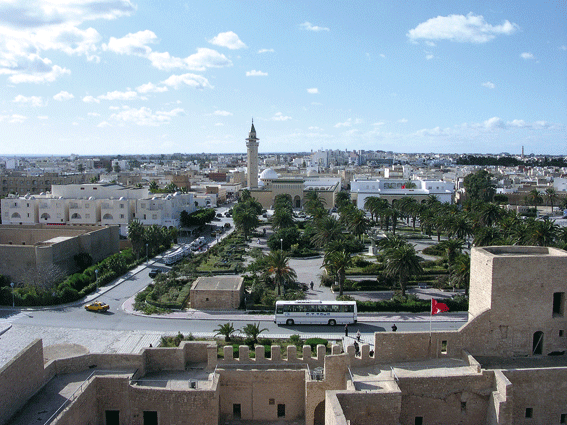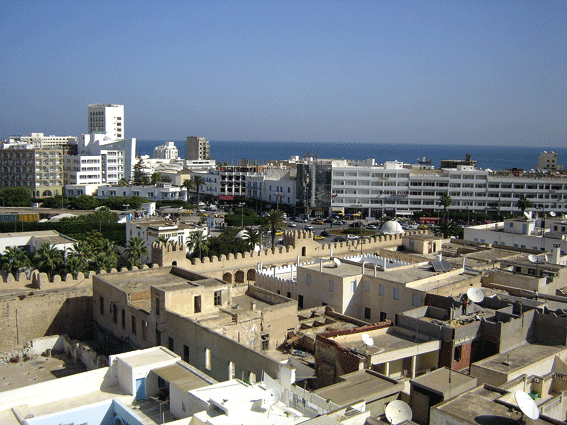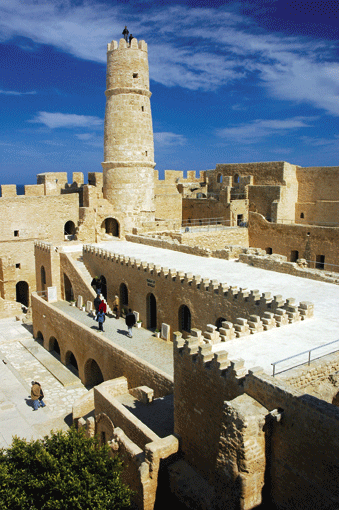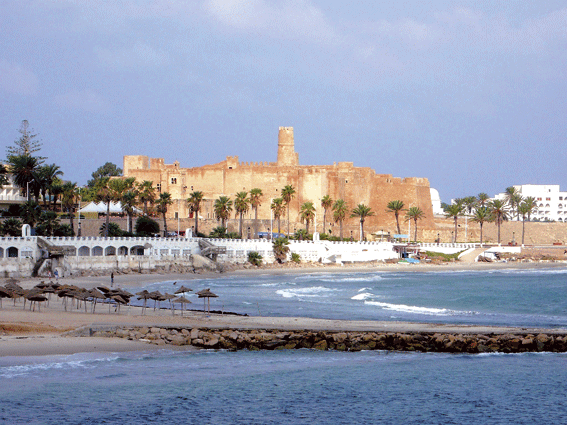
Travel
Monastir
A City with
Deep Roots in History

The Tunisian city of Monastir, visited by many tourists of different nationalities, stands proud of its deep rooted history. Its legendary past and its bright present promise a much brighter flourishing future.
Monastir is located on the central shores of Tunisia, 165 km from the capital Tunis, with a spectacular view over the of the Mediterranean Sea. It is a city rich in historical events which became a major tourist resort. Excavations in Monastir have shown traces of human activity belonging to the Attirian Civilization that existed in the area, between the Middle Stone Age and the late Stone Age (35000 and 25000 years BC).
The Attirian civilization was named after a well (Atter) near the Tunisian border with Algeria.
History and Civilization
Towards the end of prehistoric times, Monastir was known as Alhawanit. The name was derived from the Arabic word for (shop) around 3000-2000 BC. Its civilization relied on digging bunkers on the rocky beach and using them for burying the dead.
Monastir, whose name came from the Latin word Monasterium, is the same city of Ruspina founded by the Phoenicians who came from the city of Tyre during the fourth century BC. The name Ruspina means “peninsula”, and it was built over eight hectares on a strategic site. Its immunity kept invaders away.
Roman Rule
Ruspina helped the well-known Carthaginian Hero (Hannibal) in his war against the Romans during the third century BC.
Although Ruspina was under Roman rule since the fall of Carthage during the second century BC (146BC), there is no doubt that the Punic civilization, a mixture of Berber culture and Phoenician civilization, had continued to exist till the middle of the first century BC. During that period, Ruspina was a free city with a municipal council and a major port.
Monastir was offered a golden opportunity to realize grandeur among all African cities under Roman rule, specifically during Julius Caesar’s wars in the continent. After his victory over his enemy Pompey, the city greatly flourished.
Golden Age
The city of Monastir lived its most glorious age during the Alziri period. It escaped the awfulness of the Hilali invasion. The Alzyry dynasty, which belonged to the Maliki denomination, built many mosques in the city. The great mosque was built on the eastern side of the Ribat (fort) while the Imam Almaziri mosque was built on its western side. The marine cemetery of Monastir is seen as a great museum of the history of African society. The Imam Almaziri, who symbolizes Monastir and its people, was buried in that cemetery.
The exquisite gates
After the calamities of Norman and Almohad conquest, Monastir regained its brightness under the rule of the Hafsi dynasty. It benefited from the Hafsi’s style of architecture so that the city began to exhibit classical features. Walls were erected around the city with exquisite gates, like the Path Gate (Bab Aldarb) and the Fence Gate (Bab Alsour). It flourished and many mosques were built in the different parts of the city during the 13th century. The Rabat was fortified and a new western entrance built by Abu Fares Abdul Aziz.
Monastir was the first city built in Arab Muslim North Africa, as it included the current Tunisia and part of Algeria. In 665 AD, Monastir became the stronghold for the protection of Qairawan outside the capital.
Monastir Ribat (fort)
Founded by governor Harthama Bin Alayoun under the rule of Caliph Haroun Al-Rashid in 796 AD, it became one of the most fortified defense features thanks to the ever-continuing expansions and fortifications taking place between the 15th and 18th century.
It was inhabited by volunteers (Murabitoun) dedicated to the service of the Ribat. It played a new shifting role as it was soon transferred to a radiating spiritual center in the mid-third century AH.
Ribat Square
The Ribat of Monastir is considered the oldest and best preserved fort in the Maghreb area. The control tower of 20 meters high, overlooks the Ribat square, which is surrounded by rooms on three sides. At the top of the tower, one can enjoy the view of the beautiful Monastir beach.
At the time of the French protectorate (1881-1956), the occupiers followed a discriminatory policy against Monastir, promoting the Roman town of Sousse to its detriment. As a result, Monastir was divided into several sectors and was economically isolated due to its remoteness from the railway and the freeze-out of the port activity.
Fences were demolished in 1903 and the city stores erased in 1926 so the city entered a process of economic, social, and urban stagnation which lasted for about 75 years.
Round towers
The Ribat takes the form of a castle fortified by round and polygonal towers. The entrance is decorated with columns topped by semi-circular arches garnished with plant shapes which characterized the Fatimid and Alziri style.
The entrance gate is topped by an inscription written in the clerical calligraphy style. The gate opens to the courtyard allowing access to the original Ribat.
The plan of the prayer building has become a model for later Tunisian mosques.
The standard forms comprise aisles running perpendicular to the kiblah wall with a raised aisle in the center leading to a domed cupola in front of the mihrab. In addition, there is usually one or more aisles running parallel to the kiblah wall forming a T plan.
Traditional Industries
The Ribat, before the tetragonal modification, consisted of four buildings open to an internal courtyard, in addition to the small rooms for the mujahideen, who were carrying out their military duties, while working, praying and mediating in the same place.
The Ribat is home to two mosques, the largest is a housing place where rare supplies of worship and traditional industries belonging to the middle age are exhibited.
A spiral 100 step staircaseleads to the top of the control tower. In the past, the guards used the tower in the night to exchange light signal with other neighboring forts, but now the tower can be used for having a panoramic view of the beautiful blue coastal sea.
Tourist Destination
One of the most important recreational activities is the Monastir International Festival, which was launched in 1964 to later become the Arab Theater Festival that includes reviews of popular arts.
The Ribat of Monastir hosts many artistic exhibitions and attracts artists from all over the world.